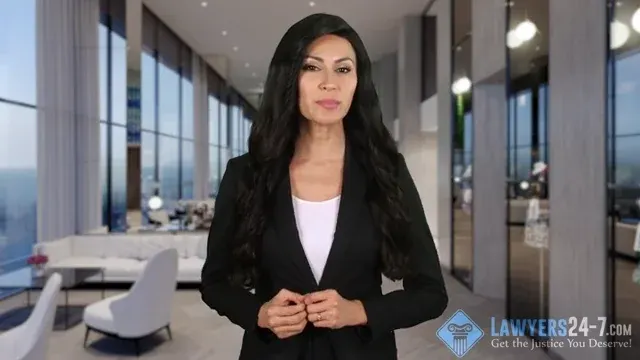Tripped and fell? Here’s what you need to do next.
Tripping and falling on an uneven walking surface is common. Our trip and fall lawyers explain what you need to do next if you tripped and fell on a defective walkway.
When a person trips, their foot comes into contact with an obstacle or an uneven surface, causing them to lose their balance. This can happen on all types of surfaces, including sidewalks, stairs or carpeting This disrupts the person’s center of gravity, which is the point around which their weight is evenly distributed.
The sudden shift in balance causes the person to start falling forward or backward, and they instinctively try to regain their balance by stepping or reaching out with their arms. However, if their momentum is too great or they cannot recover their balance in time, they will fall.
The force of the fall is determined by the person’s mass and the acceleration due to gravity, resulting in an impact force that can cause injuries depending on the height of the fall and the surface they land on.
Regardless of how your trip and fall accident occurs, an owner’s obligation is the same: owners are legally required to keep all walking surfaces free from dangerous defects. In fact, the law requires that property owners keep their property in “reasonably safe condition” at all times. When property is not reasonably safe, an owner may be responsible for injuries that result from a trip and fall accident.

Injured in a Trip and Fall Accident? CLICK HERE, Answer a Few Questions and Find Out If You Have a Case.
How Do You Prove (and win) a Trip and Fall Case?
No matter what causes the trip and fall, the legal framework is the same. The law requires property owners to take “reasonable” measures to prevent tripping hazards from being present on their property. There are many different types of tripping hazards that can exist on property. Here are just a few examples:
- Broken, cracked or raised sidewalk;
- Broken steps, uneven steps;
- Missing handrails;
- Lifted, cracked and uneven flooring;
- Dark hallways and staircases.
Under the law, a property owner must inspect the premises regularly for unsafe conditions, and take immediate action to remove hazards once spotted. A property owner can be held legally responsible, if there is a failure to take adequate measures to keep the property reasonably safe.
Liability for a trip and fall accident often depends on whether the property owner knew about the hazard before the accident. This is known as the “notice” requirement. The theory here is that an owner can’t fix a problem, if they don’t know about it. As a result, saying “I had no idea that the step was broken”, can be a viable defense under certain circumstances.
However, in most cases, it is not necessary for an owner to actually know about the defect before the accident to be held responsible. Instead, the law allows jurors to ask whether the owner “should have known” about the defect before the accident. If the answer is yes, then the notice requirement may be satisfied.
It is important to identify witnesses who can establish the length of time that a defect was present in trip and fall cases because the longer a defect was present, the more likely it is the owner should have known about it.
Learn About The Special Rules for Municipal Defendants, Like The City of New York
The “notice” requirement in some cases is far more complicated because the injured party may need to prove “actual written notice” of the defect in order to file a claim. This requirement is necessary for claims against the City of New York, and some other municipalities.
The prior written notice requirement for injury claims against the City of New York, and other municipal entities, is a legal requirement that requires a person to file a notice of claim with the City before they can file a lawsuit for personal injury. The notice must be filed within 90 days of the incident, and it must contain specific details about the time, place, and circumstances of the injury, as well as the extent of the damages suffered.
This requirement gives the City an opportunity to investigate the claim and assess the extent of its liability, and it allows the City to take steps to preserve evidence and identify witnesses. Failure to file a notice of claim within the required time frame can result in the claims being barred.
Can The Injured Party Also Be Responsible In a Trip and Fall Case?
If you were injured in a trip and fall accident, the property owner’s attorney will question you about your accident. The defense lawyer will be looking for evidence that you were comparatively negligent. You will be asked questions about your familiarity with the area, any possible warnings of the hazard, and whether you were distracted at the time of your fall.
This evidence will be used to try and reduce any award in your favor under the rules of comparative negligence. If you are found to be partially at fault, your award will be reduced by the percentage of your fault.
What Are Common Injuries Caused By Trip and Fall Accidents?
While a trip and fall can cause many different types of injuries, these types of accidents commonly cause:
Fractures: Tripping and falling can cause bones to break or fracture, especially in the arms, wrists, hips, and ankles. Fractures can be very painful and may require surgery, physical therapy, or other medical treatment.
Head Injuries: Falling can also cause head injuries, including concussions and traumatic brain injuries. Head injuries can be particularly serious, as they can cause long-term damage to cognitive function, memory, and behavior.
Soft Tissue Injuries: Tripping and falling can also cause soft tissue injuries, such as herniated discs, sprains, strains, and contusions. These injuries can cause pain and swelling and may require rest, ice, compression, and elevation to heal properly. In some cases, soft tissue injuries can be debilitating and may require surgery or other medical interventions.
Lawyers24-7.com | Ask Questions – Get Answers
If you were injured in a trip and fall accident, contact our experienced trip and fall lawyers by email or calling (800) 762-9300 for a free consultation. You can also simply fill out one of our case intake forms and we will have one of our attorneys get right back to you.










